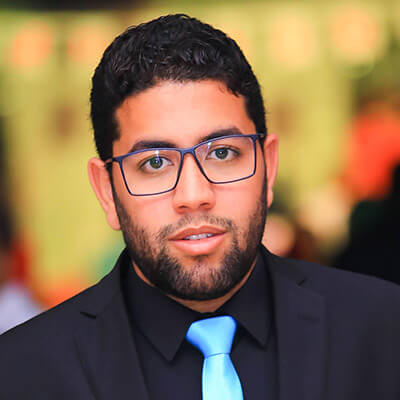"Best Oncologist in Delhi Dr. Sajjan Rajpurohit is one of the best cancer doctors I've ever had. He has always been there when I needed him, whether helping me with my diagnosis or just giving me regular checkups. I'm very pleased with his services and would highly recommend him to any of my friends."

Blood Cancer Specialist Doctor in Delhi
Blood cancer, also known as leukemia, is a type of cancer, which is related to the blood and bone marrow. There are several categories of blood cells, including red blood cells (RBCs), white blood cells (WBCs), and platelets, with leukemia being related to cancer of the WBCs and rarely associated with red blood cells and premature platelets. It can affect a person of any age. There are two types of leukemia – acute and chronic leukemia. In acute leukemia, the condition develops and worsens rapidly, whereas, in chronic leukemia, the condition worsens over time. There are different treatment options for leukemia, but the course of treatment is decided based on the type of leukemia the patient has.
Read more about Blood Cancer
Symptom of Blood Cancer:
Symptoms arise depending on which blood cell production is affected and which cancer cells are multiplying rapidly.
Bleeding
In the formation of blood clots, platelets play an important role. Due to marrow replacement, platelet production is affected. In some, the functions of platelets also change. As a result, it becomes easy to wound or bleed. Small red and purple spots are formed on the body which is called petechiae or anastomosis.
Recurrent Infection
One of the important functions of white blood cells is to protect the body from infection. At times, when the white blood cells fail to function properly and are insufficient in numbers, one can easily get affected by the infection. A simple infection in a normal person can become fatal in a leukemic patient. They may have a fever, chills, redness at the site of infection, cough, or any other symptom depending on which organ is affected.
Anemic
Due to a lack of RBCs, a person may suffer from anemia. Low RBC means there is a lack of hemoglobin in the blood. As hemoglobin transports iron around the body, any deficiency in iron can result in the following symptoms:
Breathing Problem
Pale skin
Tiredness
Sometimes, jaundice may occur due to the spontaneous breakdown of RBCs in the body.
All these symptoms can be the result of other diseases as well. Confirmation of whether it is leukemia or not requires consultation and testing.
bone and joint pain
This is one of the common symptoms that can be mistaken for rheumatoid arthritis. Severe bone pain, joint pain and swelling are commonly seen. It is caused by the rapid multiplication of leukemic cells in the bone marrow.
OthermLeukemic cell leakage can cause gingivitis, bleeding, painless lymph node swelling, enlarged liver, spleen, headache, seizures, difficulty in breathing, jaundice, etc.
the treatment:
Treatment for leukemia depends on the age of the person, their health and the type of leukemia the person is suffering from. The most preferred treatment for leukemia is chemotherapy. If this treatment is adopted at an early stage, then the chances of a person recovering are high.
Types of Blood Cancer
Leukemia: This is the primary and major type of blood cancer, in which the number of white blood cells is much higher than that of red blood cells. It is generally seen that in some people the onset of leukemia cancer is gradual and later. It becomes dangerous.
Leukemia cancer is also of many types and people are unaware of it. There are 4 main types of leukemia cancer:
Acute Leukemia: When blood and Mauro's cells grow rapidly and collect together, then the same condition is called Acute Leukemia. These cells start accumulating very quickly in the bone marrow.
Chronic Leukemia: When there is a process of formation of some undeveloped cells in the body in addition to the rest of the cells, it is called chronic leukemia. Chronic leukemia also progresses over time and if left untreated, it can make the condition very serious.
Lymphocytic Leukemia: This is a condition in which the cells in the bone marrow start turning into white blood cells.
Myelogenous Leukemia: When platelets are produced by Mauro cells in addition to red blood cells and white blade cells, it is called myelogenous leukemia.
Apart from this, there are some other types of blood:
Lymphoma: When there is a rapid growth of lymphocytes in the human body, then such a symptom is called Lymphoma. It has been seen that, it is treated with medicines and radiation therapy and it has also been successful but if it is ignored then surgery is the only way to avoid it.
Myeloma: In this type of cancer, the plasma cells of the person are affected, due to which his immunity decreases. which keeps on decreasing.
Following are the types of treatment for Blood Cancer:
Chemotherapy
In chemotherapy, IV drugs are administered using a drip. In acute leukemia, a central line is maintained, due to repeated screening and injections. These have long term usefulness and save the patient from repeated pricks. Although chemotherapy drugs target and kill cancer cells, they also affect other non-cancerous cells, causing severe side effects such as hair loss, weight loss, and nausea, blood cell counts. However, these effects are temporary and heal completely. There are different chemotherapy treatments depending on the type of leukemia. In children, 90% of acute lymphoblastic leukemia and 70% of acute myeloid leukemia are cured by therapy alone.
Read more about Chemotherapy
Targeted Therapy
In targeted therapy, Dr. Sajjan Rajpurohit uses drugs to target cancer cells. These drugs target only cancer cells without affecting other cells, thus reducing potential side effects. Rituximab, imatinib, dasatinib, and nilotinib are some of the drugs used as targeted therapy. One study found that people who received treatment by imatinib had a 5-year survival rate of about 90%.
Read more about Targeted therapy
Interferon Therapy
Interferons are a family of naturally occurring proteins, made and secreted by cells of the immune system. Interferons control the immune system's response to viruses, bacteria, cancers, and other foreign substances that invade the body. This therapy acts as a deterrent to the growth of leukemia cells and eventually stops their growth. Although it is helpful in curing leukemia, this therapy has serious side effects.
Radiation Therapy
This type of treatment is recommended for adults and some children over the age of 3 who have acute lymphocytic leukemia (ALL).
Read more about Radiation Therapy
Stem Cell Transplant
In this procedure, existing bone marrow is destroyed by chemotherapy, radiation therapy, or both. This is done so that in the bone marrow

About Dr. Sajjan Rajpurohit
Dr. Sajjan Rajpurohit has been a practicing physician for the past 22 years. He is a qualified MBBS with MD in Medicine and DNB in Medical Oncology and currently he is Director of Medical Oncology at BLK Super Speciality Hospital.





